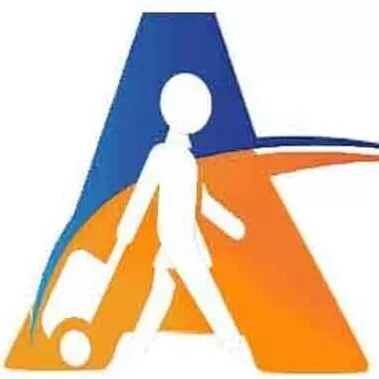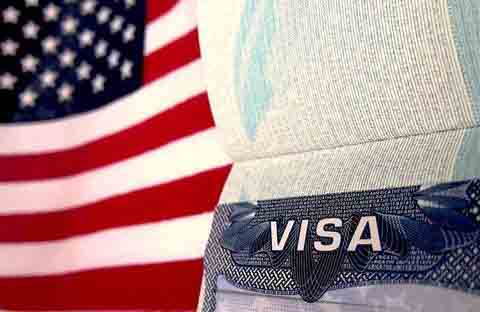US Student Application Guide
Yearly, numerous and countless people worldwide travel to the United States to study full time or part time in their universities and colleges. This is the complete guide on how to apply and get your US student visa approved.
You can be a citizen from the UK, Ghana, Nigeria, Zimbabwe, Zambia, Philippines, Nepal, India, Canada, Germany, Jamaica, Mexico, Afghanistan, Dubai, Myanmar, Sri Lanka and wherever your geographical location, with the best of grade but getting enrolled in a college and university in the US with its accompanying visa is a simple but very complicated process, on which i will like to guide you for the year.

I will likewise provide you with detailed tips on the checklist or documentation, processes and the interview schedules that will to aid in your visa application process and acquisition without a hassle.
Basically, what is the US student visa? This is a visa category that permits foreigners or international student to reside and study in a US approved institution over a particular period of time.
Till the validity of the student visa, the visa holder is able to temporarily reside in the US by studying full time or part time language program and an academic exchange program.
They can stay in the US as long as 60 days past the time span it takes to finish their academic program, except if they have applied and been endorsed to remain and work for a while under the Optional Practical Training (OPT) Program. Fortunate ones are able to convert to citizens after their studies.
Recommended reading….. How To Acquire A 5 Year Tourist Visa To The U.S.A
Types Of US Student Visas
The US student visas are grouped into three categories depending on the type and duration of studies in the US. They are F-1 visa, J-1 visa and the M-1 visa.
- J-1 visa
The J-1 visa, otherwise called the Exchange Visitor Visa or J visa, is for anybody outside of the US who wishes to partake in study-and business related trade programs endorsed by the Department of State Bureau of Educational and Cultural Affairs. The J-1 visa is mostly issued to visitors who are been sponsored by a non-profit organization or an educational institution. With this visa category, the student studies for a short period of term which can be a semester.
- M-1 visa
A M1 visa is also a non-immigrant visa issued on the purpose of nonacademic or vocational studies. The visa is given by the US Department of State after you have been acknowledged to learn at a local community or junior college, post-secondary school, or post-secondary business college, with somewhere around 12 semester study length.
With this visa category, a non-academic institution sends an admission to a vocational program to the applicant and after acceptance, an i20 issued for visa application.
- F-1 Visa
The F-1 Visa allows an international student to enter the United States as a full-time student at an accredited college, university, seminary, conservatory, academic high school, elementary school, or other academic institution or in a language training program. You must be enrolled in a program or course of study that culminates in a degree, diploma, or certificate and your school must be authorized by the U.S. government to accept international students.
When Is The Best Time To Apply for a US Student Visa?
Starting the application processes for a US student visa should be begin immediately after an admission has been offered by an accredited institution or Student and Exchange Visitor Program (SEVP) Certified Schools in the USA and the student has accepted.
Once the admission has been secures by the applicant and an I-20 documents sent, then the visa application processes can start.
Checklist Or Documents Required To Start The US Student Visa Application Process
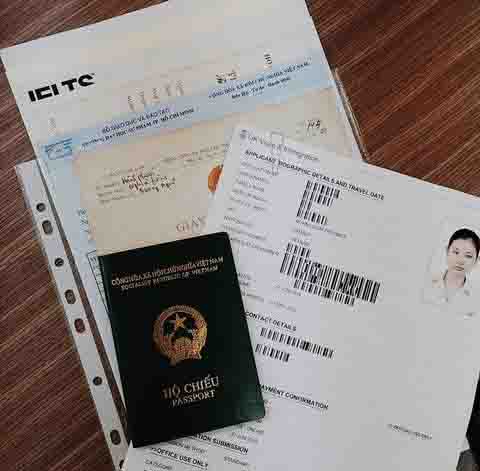
These are the requirements that applicants must meet when applying for their US student visa from the consular section of the US embassy in their home country.
- Passport;
A passport is an official travel document issued by a government that contains a given person’s identity. It enables its holder travel to and from foreign countries and to access consular assistance while overseas. The document certifies the personal identity and nationality of its holder. This is a mandatory document that every traveler or visa applicant must possess when applying for any visa.
The passport should likewise be valid until no less than six (6) month and above the end date of your program in the US. Bear in mind that any visa that will lapse during your visit in the US or not long after your program finishes may not be utilized. In such case a new passport will have to be applied from the passport issuing authority of the person’s home country.
Students from Ghana without passport can read more on HOW TO APPLY FOR YOUR BIOMETRIC GHANAIAN PASSPORT
- Passport size photo;
Another mandatory document is the passport size photo of the applicant taking in the last six (6) months on a white background.
The specifications for the photo should be presenting a color photo with clear image of the applicant’s face showing. Eye glasses must be taken off when taking the photo.
The right size of a visa photograph is 2 x 2 inches (51 x 51 mm). Head should be between 1 – 1 3/8 inches (25 – 35 mm) from the lower part of the jaw to the highest point of the head
The applicant can use the photo tool to check their photos before attaching it to their applications.
- Form I-20 documents
The Form I-20 is a United States Department of Homeland Security, specifically ICE and the Student and Exchange Visitor Program, document issued by SEVP-certified schools that provides supporting information on a student’s F or M status. The Form I-20 is issued by the university to support your student Visa application.
Once the student submits their acceptance and payment deposit to the institution, the institution’s Designated School Official will then issue an official form called Form I-20 to proceed with your student Visa application. The Form I-20 contains information for you to continue with your I-901 SEVIS fee payment, including information such as your personal details, school, program of study, financials and so on.
- Application fee payment for the SEVIS
Another requirement for the applying to get a US student visa is the payment of the SEVIS fee. It is an amount paid to the Student and Exchange Visitor Information System a US government agency that are in charge of foreign education in the US.
The SEVIS system tracks F, M and J visa holders and their relatives from the time they receive their initial documentation till completion of their program in the United States.
For nonimmigrant students with Form I-20, the SEVIS fee cost USD 200 and Exchange visitors with Form DS-2019 which is a multi-purpose document issued by a U.S. government-approved institution certifying that your admission into a program has been accepted and that you have demonstrated sufficient financial resources to stay in the U.S, the SEVIS fee is US$180.00.
Payment receipts must accompany the application documents for the visa to be approved. Applicants are to check from the US embassy from their home country for the latest fees before applying.
- Non-immigrant visa application and the Form DS-160 confirmation page
The DS-160 is used to apply for nonimmigrant visas, which are used to visit the United States temporarily. The DS-160 is accessible from the online portal of the consular section of the US embassy here.
To fill out Form DS-160, the applicant will begin by choosing the location where they are applying for your visa. It is highly recommended to always apply from the applicant’s home country or nearby embassy if there is no embassy in their country.
By login in from the portal, you will see your Application ID after beginning the process. You will also be asked to provide the answer to a security question. Write these down and keep them safe together as it will be the only means you can use to access or retrieve your unfinished application.
The saved Form DS-160 will just stay accessible for 30 days. In the event that you really want additional time, you can download your DS-160 to your PC and transfer it again later.
On the Ds 160 form, this is the information that will be required;
Part 1: Personal Information
In the initial segment of Form DS-160, you will give individual data like your name, date of birth, and conjugal status.
You will likewise be requested your ethnicity, your national identification number and your U.S social security number or taxpayer identification number if you have them.
The saved Form DS-160 will just stay accessible for 30 days. In the event that you really want additional time, you can download your DS-160 to your PC and transfer it again later.
Part 2: Travel Information
In this segment, you will clarify your itinerary for the traveling, including the reason for choosing the United States, your dates of arrival and departure, and the U.S. address at which you will be staying. On the off chance that you have not made arrangements yet, you can give assessed dates.
Part 3: Travel Companions
Here, you can fill in the details of anyone travelling with you. This might include family, friends, or members of an organized tour group. You don’t need to include work colleagues traveling with you. Either way, note that everyone travelling with you will still need a separate Form DS-160.
Section 4: Previous U.S. Travel
Then, you will be inquired as to whether you have at any point visited the United States. Assuming that you have, you will have to give dates and all details.
You will likewise have to demonstrate assuming you have at any point been denied a U.S. visa.
Part 5: Address and Phone Number
This part is the student will just enter their present location, telephone number, and email address.
You will likewise be approached to list every one of the online media accounts you use such as Twitter, Linkedin, Facebook etc. This is a new expansion to the DS-160, with USCIS authorities currently needed to actually look at your online media movement while evaluating your application.
Part 6: Passport Information
On this page, you will be asked for your passport information.
You will also be asked if you have ever had a passport lost or stolen. If you have, you will have to supply further details.
Part 7: US Host Information
In this section, you will list a person in the United States who knows you and can verify your identity. If you do not yet know anyone in the United States, then you can simply submit the name of any business or organization such as the institution you will be attending in the US as your host.
Part 8: Relatives
Next, you will provide basic details about your father and mother which would include their date of births and so on. You may also be asked to provide details of any family members currently in the United States.
If you are married, you will also be asked for your spouse’s name, date of birth, nationality, and home address.
Part 9: Work, Education and Training
In this section, you will fill in the details about your occupation, educational background, and employment history in the last 5 years. With the occupation, you have to state your duties or responsibilities, salary information etc.
You will also be asked for your travel history and for details about any specialist skills you possess, or any military groups, charities, or professional organizations of which you have been a member.
Part 10: Security and Background Information
This is the side where you will answer “yes” or “no” to 25 questions on security and background issues. Make sure you read these questions carefully and take care when answering, as mistakes here could adversely affect your application. Applicant applying for the visa must ensure they do not have any bad security record. This can affect their visa application.
Part 11: Applicant Photo
Here you will need to upload a photo of yourself that conforms to U.S. Department of State guidelines. As i have given the photo specifications earlier above. Once the upload is successful you can review your application for errors, omissions and make all necessary corrections. The applicant here will then confirm the location from where they are applying for their visa and the form will be sent to that embassy for processing.
The applicant before submission will read through all the terms and conditions and finally submit the DS 160 form. The applicant will at this point print the confirmation page of the DS-160 submission and accompany them with the other documents.
Visa application fee
The student will have to pay for the visa fee of their visa application for processing. The visa fee must be paid with respect to the appropriate visa category and the receipt attached to the documents.
Arranging an interview with a local embassy in your country
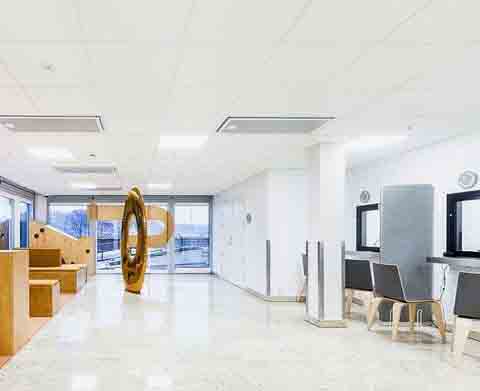
It is incredibly essential that you do your application well ahead of the date your studies start which should be like 3 months before the academic year begins. The student will at this point schedule an appointment or interview with the US embassy in their home country. By reaching out to them they can arrange the available dates for the applicant to submit their applications.
Attending Interview with US embassy
Prior to the day of the interview, the student applying for the US study visa should gather all their original documents like;
- Passport
- A copy your American sized passport photograph
- Your printed DS-160 confirmation page
- Your SEVIS fee and visa fee receipts as it may prove to them of payment to process your student visa.
- Original copies of the admission documents and form I-20 (for F-1/M-1 students, or J-1 students) .
Additional forms and documentation that may be required in support of the above documents to get a US student may include the following:
- Official transcripts from colleges or universities the student has attended.
- Academic certificates
- Standardized test scores (if required by the US school)
- Financial statements or Proof of sufficient funds to support the student’s education:
You will have to demonstrate to the officer that your family has the ability to pay for the first year of your proposed stay in the United States and that you have realistic plans to finance the remainder of your study abroad. If you are the one funding your studies, then you have to provide financials records to prove you can pay for the tuition, accommodation and all other miscellaneous while studying abroad.
Most applicants deposit huge sums of money into their bank accounts just to secure visa but this may not be enough. Always contact your bank to issue an official letter stating the duration of the they have transacted services with you and the balance in the account. By virtue of this information from the bank, you can be able to convince the consular about the visa application for approval. Read more about the How Much Do You Need To Have Your Visa Approved- Bank Statement Requirements
- Proof of your intent to depart the US at the end of your program; This refers to the things that binds the applicant to their home country. This can include the applicant owning a property in their home country, marriage, having children and so on.
The applicant should arrive at the embassy on time to have enough time for preparation towards the interview. The applicant will go through security checks before permitted to enter the premises of the embassy and their fingerprints taken before the interview.
The student will have to be very confident, bold and polite to answer the questions from the consular. During the interview, the questions will mostly focus on why you want to study at the school you have selected and what you intend to do after the program finishes.
It is important to clearly state that you do not intend to remain in the US once you complete your program. There are no hidden secrets to the interview questions as they will be asked base on the information the student has provided and backed by documents.
Be prepared to give your information quickly and completely. If you are unable to answer the questions in English, and the visa officer does not speak your language, you can ask for an interpreter. Speaking English is not a requirement for a student visa. In fact, thousands of students come to study in the United States each year to learn how to speak English.
The visa officer needs to know your specific objectives on academic or professional for studying in the United States. Be prepared to explain why it is better to study your specific field in an American university than to study at home. Be ready to say exactly what you will study and for what career your U.S. studies will prepare you. Calmly state your education plans concisely and clearly.
If you are going to the USA to learn the English language, and then earn a degree, be able to explain your complete program of study. Remember, it is not enough to just say, “It is better to study in the United States.” Give valid reasons why it is better for you. Visa officers like to hear honest, direct responses to questions. They generally react poorly to applicants who give inaccurate answers, memorize a speech, or make overly solicitous comments about how great and wonderful the United States is.
You should also be able to explain in detail why you chose to study at a specific school and be able to give information about that school and where you will live whether in the dormitory, host family, or rented apartment.
After the interview
The consular will inform the student applicant on their decision after the interview. When the visa is approved, the consular will issue a letter giving the date and where the applicant can pick up their passport with visa. This mostly takes some few days.
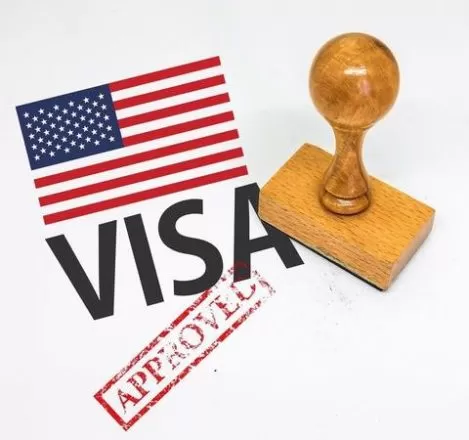
In the case of the visa being denied, the consular will issue a letter explaining the reason for the denial or rejection. If you are denied a student visa there may be something you can do to reverse the denial. You may appeal the decision. In most cases, you will need to provide additional documentation that was not presented with the initial application.
In some cases, a visa officer may request additional documents like proof of employment, or ownership of a home or business. You should respond with the information requested.
Reasons that could get your US student visa application rejected
Though US student visa applications hardly get denied but some of the reasons that could get them rejected include the following:
- Failing to show your intention to leave the U.S. after you graduate
This is the most common reason that makes visa officers reject student visa and the most important aspect they follow during the visa interview. Without any exaggeration, try to make it as clear as possible that your only plan is to study in the States and that you will return to your home country after you graduate.
- Insufficient financial records
Generally, insufficiency funds in the student’s financial records may get their visa application being rejected. The available funds to the student must be able to cater all the expenses and tuition in the US. If the student is being sponsored or obtained scholarships, they must attach the relevant documents to complete their documents in the interview. Some people contradict by saying they will be engaging in jobs to support their studies. When such a reason is given, it contradicts with main the purpose of getting a student visa.
- You do not pass the security check. Though this may be obvious, committing certain crimes can make you ineligible for a US visa.
You do not bring all required items to your interview. Failure to bring all required items, such as your passport, receipts, and official visa-related documents, may result in a visa rejection.
- You fail to show up to your interview. If you are late to your interview or simply fail to show up, your application for a visa may be rejected.
- You apply for a US student visa too late. Applying for your visa with too little time before your program starts will most likely make you ineligible for a student visa. This is mainly because your visa won’t become available to you until after your program start date.
Also read.. Good News: New Immigration Policy For International Students In UK
Thank you for reading about How To Get A US Student Visa in 2022 (Complete Guide) and also making us your best travel and lifestyle blog in Ghana.
What is your travel query? Send them to us for assistance. Kindly follow our social media handles and let us get interactive. We are accepting guest posting so kindly send us your travel related content for publishing.
